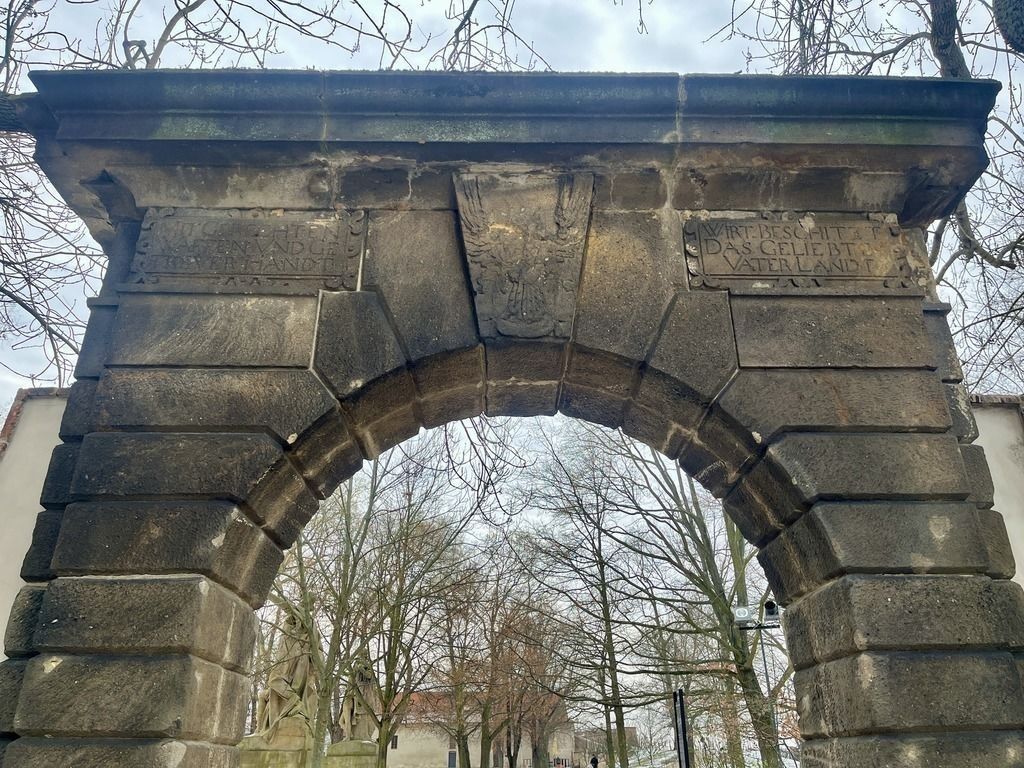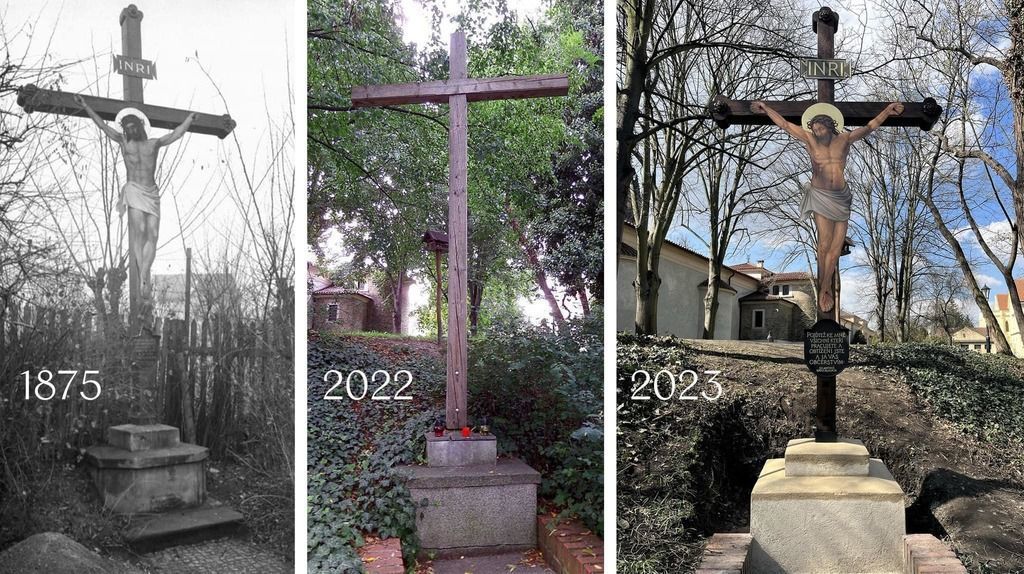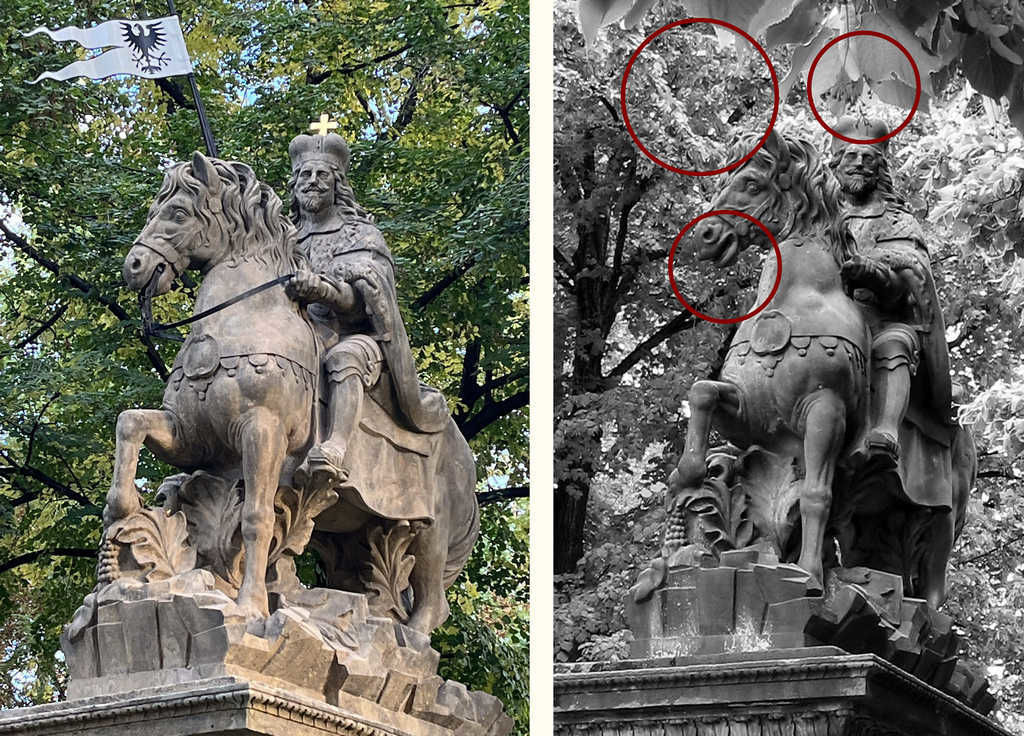PUBLIC COLLECTION FOR THE RESTORATION OF THE CROSS
Do you like Vyšehrad and would you like to contribute to the restoration of small monuments in its area? The Vyšehrad National Monument has set up a transparent account for exactly these purposes.
You can currently contribute to the restoration of the entrance gate to the acropolis, which begins in mid-January. Restoration work will continue until spring, and scaffolding will be erected. The gate will remain accessible with some restrictions, and it will only be closed during particularly demanding technological procedures. Thank you for your understanding.
In 2022, for example, the missing elements on the equestrian statue of St Wenceslas in the Štulce Gardens, whose original form was created in the 17th century by the sculptor Jan Jiří Bendl, were restored, as several missing metal elements were returned. The flagpole with the banner and the St Wenceslas eagle, the cross on the prince’s crown and the horse bridle. All the elements were restored on the basis of photographs of their original form and their restoration was carried out by the Prague City Gallery.



